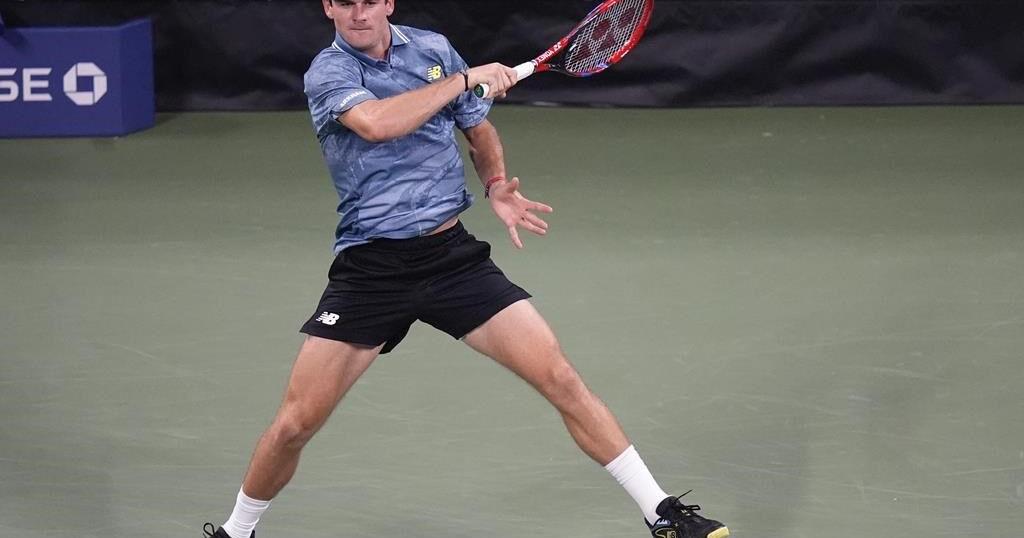NEW YORK (AP) — Plenty of tennis players at the U.S. Open agree: Don’t sleep on the benefits of a good nap, especially ahead of a night match.
Whether at a hotel or on one of the beds in the “Player Quiet Room” down the hall from the locker rooms or anywhere else they can find a spot to stretch out, these Grand Slam athletes appreciate the net gains offered by extra Zs during the tournament being played this week and next.
“In the evening, I get tired, like everybody else, so that’s why I have to take a nap,” said Tatjana Maria, a 37-year-old mother of two from Germany who lost to defending champion Coco Gauff under the lights in Arthur Ashe Stadium on Wednesday night. “I have to rest pretty much the whole afternoon to be ready for the evening.”
She’s not alone in a sport where the action can begin anywhere from 11 a.m. to 11 p.m. — and, on occasion, even later.
The way a lot of competitors look at it, no matter their country, ranking or age, is that if you DON’T snooze, you lose.
“If I feel tired, I want to sleep, so I go to sleep. Maybe if I have the first match at 11 a.m., I don’t have enough time. But any other match, I probably will take a nap for 10 or 15 minutes,” said Zhang Zhizhen, a 27-year-old who won a silver medal for China in mixed doubles at the Paris Olympics. “Sometimes in the afternoon, I will sleep for one or two hours.”
Not everyone in tennis is a napper, of course, but those who aren’t tend to be jealous of their colleagues who are.
“I see other players taking naps, and I’m like, ‘I wish I could.’ I’d love to kind of unwind like that,” said 2020 Australian Open champion Sofia Kenin, a 25-year-old American. “But I’m too fired up before a match. There’s adrenaline and nerves.”
Tommy Paul, a 27-year-old American who reached the semifinals at Melbourne Park last year, said his team pushes him to give it a try. Alas, Paul said, “I can’t sleep until it’s time for bed.” Clara Tauson, 21, a Dane currently ranked 67th, is afraid to nap on a match day, she explained, “Because then I don’t know if my brain is ever going to wake up again.”
Donna Vekic, a 26-year-old from Croatia who made Wimbledon’s semifinals in July and earned a silver medal at the Summer Games this month, only nods off if she feels “absolutely dead,” she said, because, “If I nap, I just wake up in a bad mood.”
Bianca Andreescu, the 2019 U.S. Open champion, suggested one way to counter that sort of reaction: She downs a shot of espresso shortly before lying down.
“The coffee doesn’t kick in fully until 30 to 90 minutes after, so … I wake up super refreshed after” what typically will be 25 minutes of slumber, the 24-year-old from Canada said. “The power nap is the most effective one.”
Casper Ruud — a three-time runner-up at majors, including at the U.S. Open two years ago — puts his head back on a pillow for an hour or two if he’s scheduled to be on court in the latter portion of the day.
His optimum time for bonus shut-eye is “typically after breakfast,” he said. The 25-year-old from Norway gets back up at around noon and goes to the tournament grounds. The naps are always at his hotel.
“When I come to the site,” Ruud said with a chuckle, “there’s no sleeping.”
Others, though, appreciate the benefits of nodding off whenever and wherever they can.
Whether that’s on a first-come, first-served basis in the designated space in Ashe — set up in 2022, it has three lounge chairs in a main room outfitted with a water feature offering the sort of soothing sounds often found in a spa; four twin beds in one side room where the lights are kept suitably low; and four chaise lounges in another — or a place not necessarily designed for dozing off.
“I’ve done some weird spots. I’ve been in locker rooms before where there’s not really a couch and you kind of have to make a couch,” said Denis Shapovalov, a 25-year-old Canadian who reached Wimbledon’s semifinals in 2021. “I’ve done it at (tournament) restaurants. I’ve done it on the ground at a gym. You (nap) wherever you find space.”
Leylah Fernandez, a finalist at the 2021 U.S. Open, also isn’t picky about her 40 winks.
“The lucky thing about me is that I can sleep pretty much anywhere,” the 21-year-old Fernandez said. “That’s like my little hidden talent.”
What about during a match? Leave it to Nick Kyrgios to show it can be done.
The 2022 Wimbledon runner-up, who missed nearly all of the last two seasons because of injuries and is appearing on ESPN during its U.S. Open coverage, leaned way back in his sideline chair on changeovers while playing Andy Murray in New York in 2015, closing his eyes and clutching a towel as if it were a blanket.
“Just taking a nap, I guess,” Kyrgios said that day. “It’s good for you.”
___
Howard Fendrich has been the AP’s tennis writer since 2002. Find his stories here: https://apnews.com/author/howard-fendrich
___
AP tennis:
